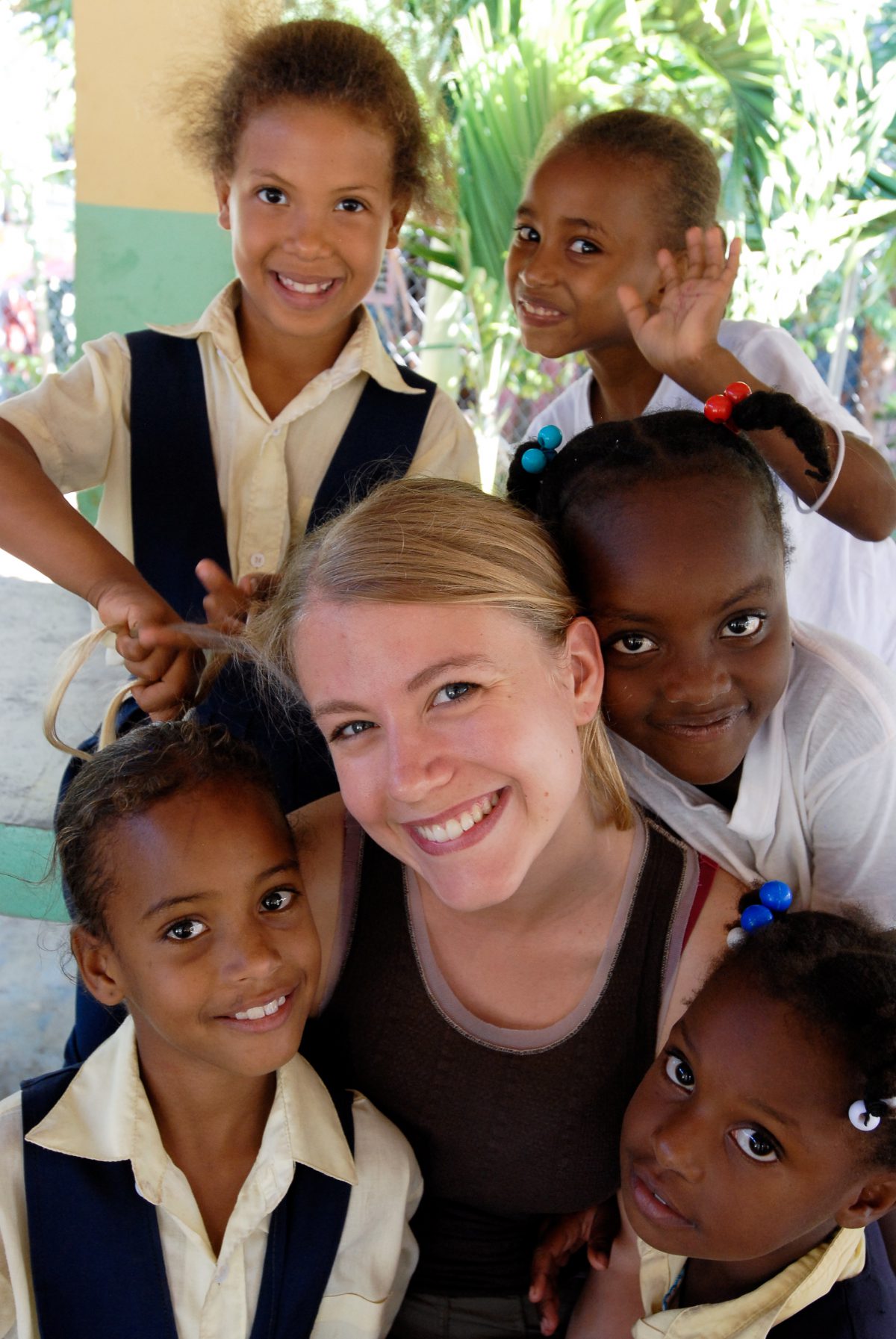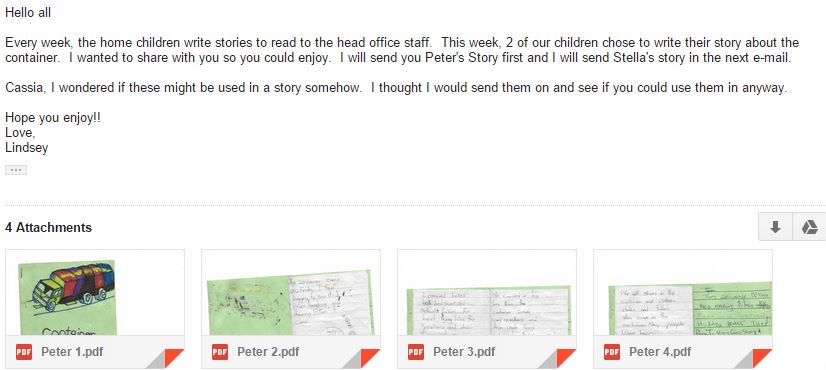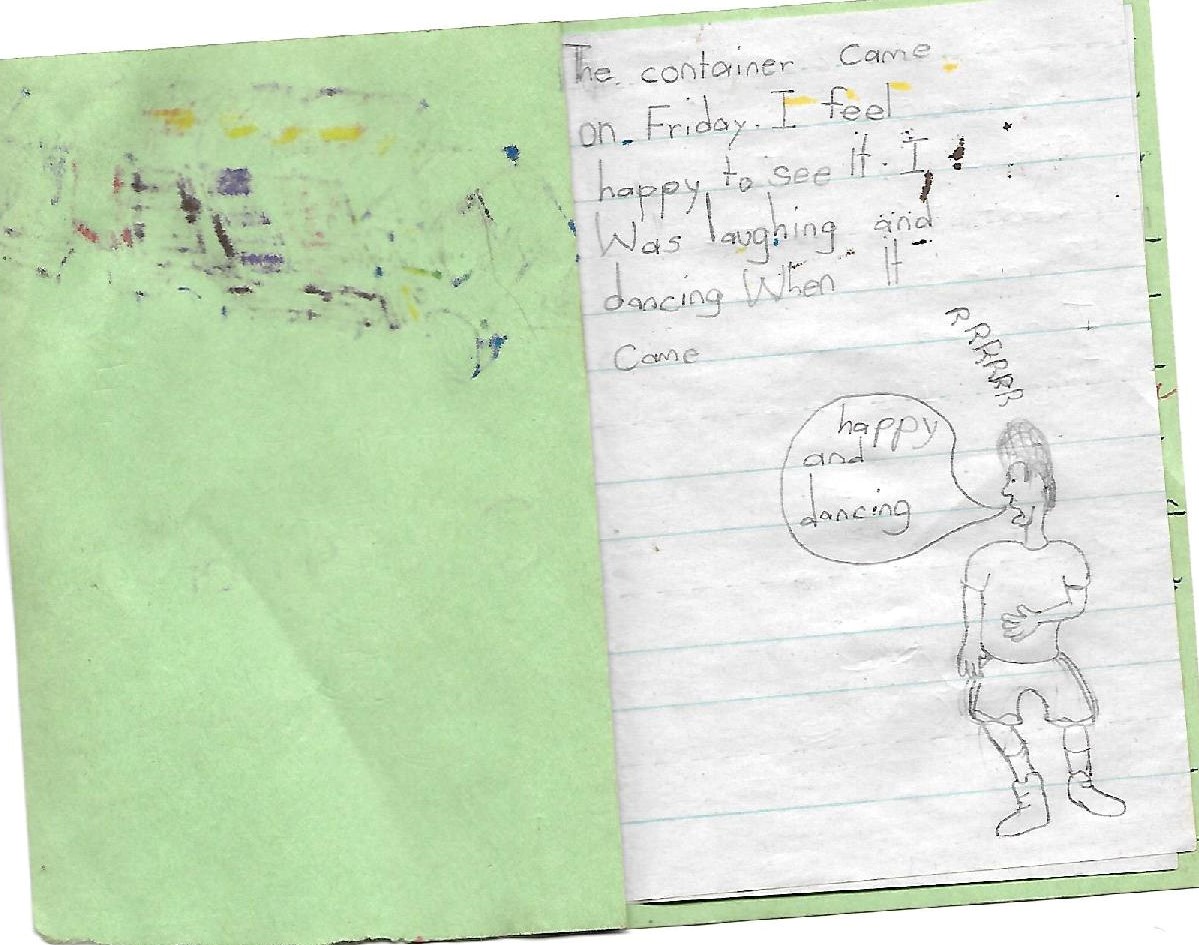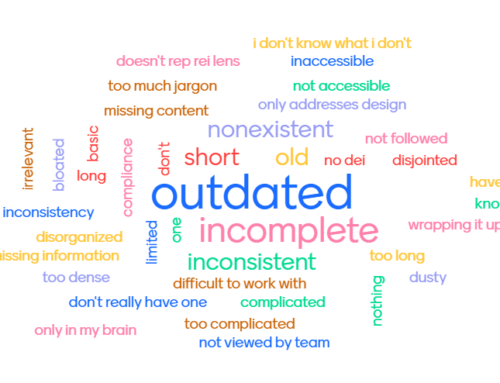
Cassia Burke
I coached Cassia Burke’s organization Children of the Nations a couple of years ago and I continue to be impressed with the way they have embraced near constant reporting and thanking of donors in creative ways. I’ve encouraged you to borrow borrow their ideas before and think you’ll like these ideas for keeping your donors informed as well. ~Kivi
Guest Post by Cassia Burke of Children of the Nations
I’m a writer with a nonprofit that works in five different developing countries, all of which have spotty internet and unreliable electricity. As such, I face a constant challenge: planning specific thank you’s for donors when I’m not sure what information I’m going to get and when I’m going to get it.
Here’s a look at how we make sure we thank donors, even when we’re not sure what information our inbox will hold each morning.
1) Do what you can in advance.
Because internet connections are slow, video and photos are often difficult to upload and send. We rely heavily on staff members traveling to the countries we serve to get good material.
Most of this simple thank-you video was filmed in advance, when one of our staff members was in Malawi in the summer. We had a big campaign for our Christmas Gift Catalog planned that fall, and wanted to thank donors promptly after. Since every item in the catalog is regularly distributed, children had just received soap and mosquito nets when our staff member was there. They were more than happy to thank donors, for both their current and future gifts.
2) Make friends with everyone … and follow them on Facebook.
You never know where your information is going to come from. Whenever anyone is volunteering for us locally or traveling overseas, I make a point to make real friends with them, and then friend them on Facebook. People share exciting news, personal stories, and fun pictures on Facebook. It’s a great place to go to find unexpected content.
3) Have a plan B and C.
I always have what Kivi would call “evergreen content” up my sleeve, in case a promised report doesn’t come through in time. We have in-country communications coordinators send us interviews with children every month, so we can always use a child’s story to thank donors. For example, if a new school opens and we don’t get photos of the school, plan B would be to tell a student’s story in a way that highlights the importance of education and thanks donors for building the school.
4) If something comes along that is better than plan B and C, be ready to scrap them and go with that.
Don’t be so rigidly set on your plan that you miss the fun miracles that come along (more often than not from following tip number 2 – following everyone on Facebook.) I opened my inbox one day to find this:

We always ask for photos of staff and children unloading containers when they arrive in-country, and usually plan a quick Facebook post to thank donors. But this was too fun – it wasn’t just photos of the container unloading, it was a whole illustrated book, written by a child, describing the process.

A page from Peter’s book about the container unloading. It reads, “The container came on Friday. I feel happy to see it. I was laughing and dancing when it came.” I put together a blog with photos of the whole book to thank donors.
Ironically, I was waiting for a different report that day, from Sierra Leone, about our new Ebola Orphan Care center opening. Government paperwork slowed that event down, so I was more than ready to scrap that plan, scrap plan B (which was an interview with the center’s director), and make this little book into a quick blog post and eblast to go out that day. It was so popular, I am thinking about requesting more reports directly from children, in their own words with pictures. I’m not sure if that process will work as well as this spontaneous story, but I am willing to try.
Cassia Burke is a staff writer with Children of the Nations. She feels very privileged to be a small part of this organization’s incredible mission by doing what she loves best—writing and constantly learning new things.






